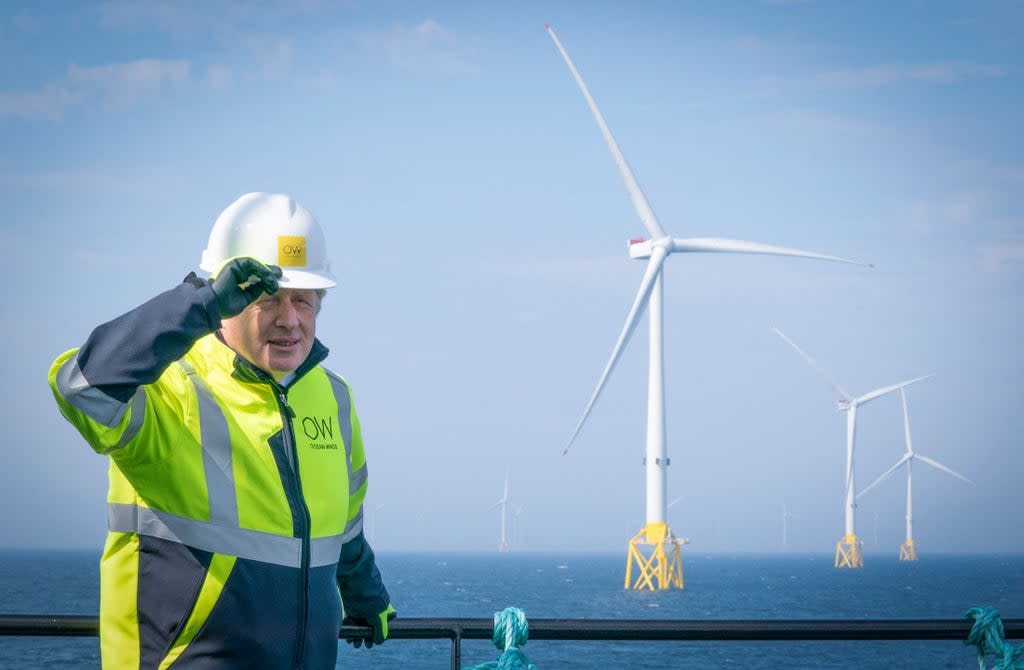UK ‘must build the equivalent of the world’s largest wind farm every 10 weeks for the next 20 years’ to meet net zero targets

[ad_1]
UK to build 1.2 gigawatt equivalent off the coastwind farm – the largest ever built – every 10 weeks for the next 20 years to meet its legally binding net zero targets, a report from the Tony Blair Institute complaints.
The report highlights how the current energy crisis, which has bankrupted many small energy suppliers, exposed “profound design and regulatory problems in the retail and wholesale energy markets,” and argues that without major adaptation, the energy market energy is moving towards a higher level of centralization and higher costs for consumers.
It warns that without an overhaul, up to 90 percent of all electricity production in the UK will be on a government backed contract.
Due to continued government support, the report’s authors warn that by 2035, energy providers will have “limited incentives” to meet supply and demand.
Instead, the report calls for a new adaptation effort to provide a flexible and affordable system.
The report’s authors, Tim Lord and Phil McNally, said that while the UK has led the way in innovation in energy technologies and markets, fundamental market reform is now needed to provide a net zero energy system that is sustainable and keeps costs affordable for consumers. .
The report sets out the scale of the challenge of decarbonising the electricity sector.
The UK was the first major economy to set a legally binding net zero target for 2050, and between 1990 and 2019 the country’s emissions fell 44%, with two-thirds of reductions coming from the energy sector. electricity.
However, this is largely due to a rapid reduction in the use of coal and greater use of gas and renewables, making further significant emission reductions requires more effort.
In October of this year, the government said that in order to achieve carbon neutrality by 2050, the UK is now aiming to fully decarbonize its power sector by 2035.
This includes a major deployment of renewable energies, including 40 GW of offshore wind.
Previous analysis suggested that achieving 40 gigawatts (GW) of offshore wind capacity would require £ 50 billion in capital investment and the completion of one turbine every day of the week for the next 10 years.
Achieving such a feat would put the UK at a global level of renewable generation – almost double Europe’s current offshore wind capacity, which is around 25 GW, including existing UK turbines.
But it’s not just the construction and installation of renewable energy that remains vital to improving energy efficiency in Britain.
The Tony Blair Institute report warns: “The transition to a zero carbon energy system means fundamental changes in the way energy is produced with an increased role for the electricity sector, a growing need for technologies to change the way we produce and store electricity and, in response to less predictable supply, consumers need to be empowered and encouraged to adapt their demand.
Report co-author Mr Lord said: ‘Britain’s energy system is at a crossroads. While we have reduced our emissions rapidly over the past decade, we are on the path to an overly centralized and inefficient system.
“It is possible to provide a flexible carbon neutral system that encourages innovation and strikes the right balance between government intervention and liberalized markets to keep the lights on and costs low – but only if we act now to reform fundamentally our energy markets. “
Read more
Over a quarter of Britain’s bird species threatened with extinction
Government refuses to disclose details of carbon cuts in flagship climate policy
Donald Trump says Boris Johnson made a ‘big mistake’ in backing wind power
Over a quarter of Britain’s bird species threatened with extinction
Government refuses to disclose details of carbon cuts in flagship climate policy
Donald Trump says Boris Johnson made a ‘big mistake’ in backing wind power
[ad_2]
